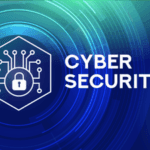Rather than flaws in training or security, insider threats often arise from dissatisfied employees. IT staff and those handling sensitive data may abuse their access if unhappy, making monitoring access essential.
We can’t fully predict responses to workplace changes, but watching for signs of discontent can reveal risks.
Third-Party Relations: The Outsider from Within
External partners like contractors who require access for their roles can also become insider threats if relations end poorly.
Simultaneously revoking access when cutting ties is crucial to avoid exploitation of assets.
The Ripple Effects of Layoffs: Seeds of Malcontent
Learning one’s job is at risk understandably breeds malcontent.
Resulting malicious actions – hoarding intel or leaking data spitefully – are rife risks requiring vigilance, especially as layoffs become more commonplace.
Financial Desperation: A Catalyst for Compromise
With rising inflation and stagnant wages, financial strain may entice some to misuse accessed assets for profit.
Roles like financial controllers privy to account details are prime targets for temptation, underscoring the importance of oversight.
Stress-Induced Errors: The Unintentional Breach
Beyond malicious threats, overloaded employees may inadvertently mishandle data.
Supporting staff well-being is key, though even mistakes borne of burnout highlight the necessity of security pillars able to catch unintentional slips.
Strategies for Mitigating Insider Threats
Stringently limiting access to sensitive data significantly reduces leakage risks.
Regularly auditing who needs access, ensuring their trustworthiness, and promptly updating as situations evolve are fundamental protective steps.
Tracking data movement – who accesses what info, when and how – enables early threat detection.
Though some monitoring can feel invasive, these systems allow rapid response to suspicious activity and are pivotal defenses against insider exploits.
Thwarting insider threats requires balancing trust and security among staff.
By grasping how these risks emerge and installing controls like limited access and monitoring, companies can nurture workplace trust while still protecting critical assets.





